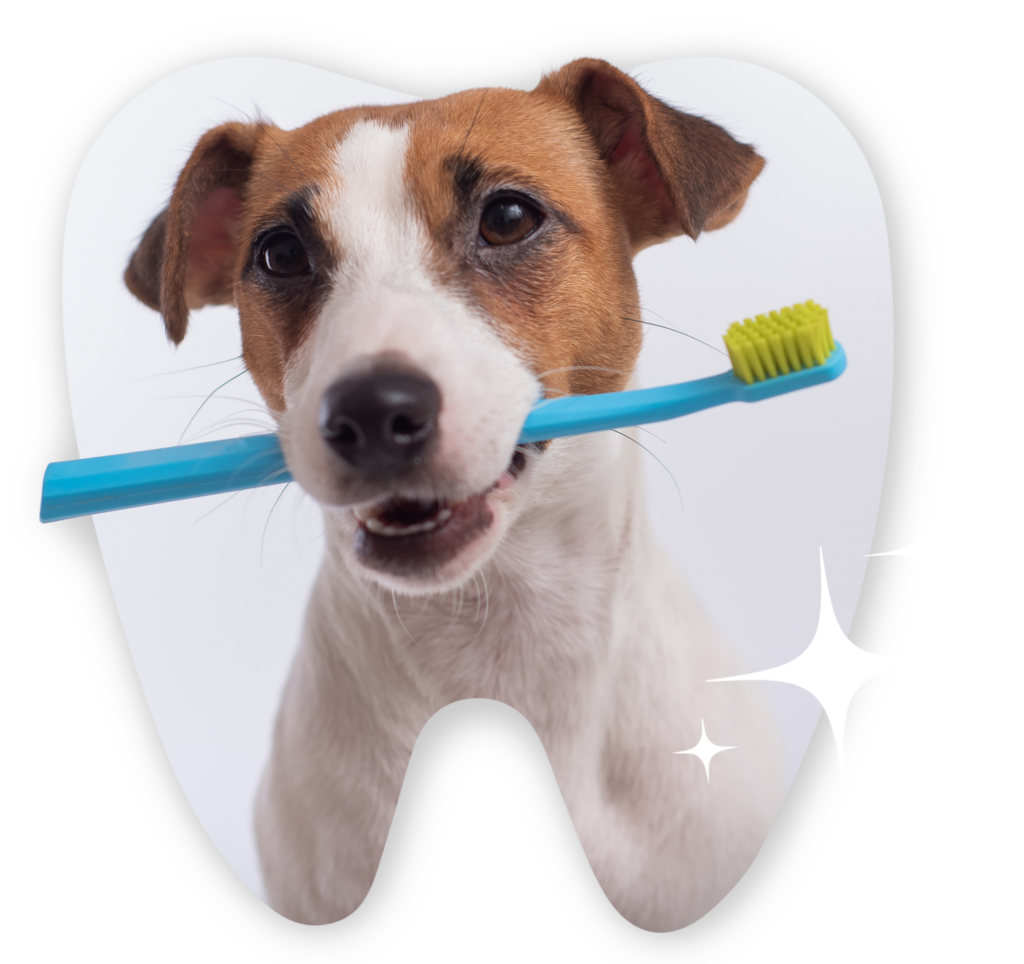Dental Days Deal
$100 off Dental Cleanings
For new and existing clients!
Call (970) 532-2726 to schedule a cleaning today!

Pet dental care is an often overlooked, but vital aspect of your pet’s overall health and well-being. Dental issues can cause pain and discomfort for your pet and lead to other serious health concerns. The American Veterinary Dental Society reports that over 80% of dogs and 70% of cats begin showing signs of dental disease by the age of three years old. At Berthoud Animal Hospital, we recommend a dental exam and teeth cleaning for all dogs and cats at least once per year. Routine veterinary visits in addition to consistent home care can help prevent dental disease from advancing and leading to other, more serious issues.
Signs and Symptoms of Dental Issues
Signs and symptoms of dental issues can be difficult to detect at home, which is why we recommend a yearly exam with a veterinarian. If your pet is showing any of the following signs, it may be time to bring them in for a dog or cat teeth cleaning:
Bad breath
Broken, loose, or missing teeth
Discoloration or tartar build-up
Excessive chewing and/or drooling
Reduced appetite
Inability to chew
Swelling and/or bleeding in/around the mouth

Pet Dental Care FAQs
For additional information on our pet dental care near Loveland, CO, we’ve provided frequently asked questions.
What does a pet dental procedure entail?
When your pet arrives at our facility on the day of their procedure, the veterinarian will begin by performing a full physical exam and pre-anesthetic bloodwork for evaluation. Once the veterinarian assures that the pet is in good health for the procedure, the technicians will place an IV catheter to allow for the delivery of anesthetic medications and fluids throughout the cleaning. In some cases, pre-emptive antibiotics and pain medications may be administered. Each patient will be placed under a light plane of anesthesia to allow for a thorough evaluation and cleaning of the teeth. Our patients are monitored consistently while under anesthesia and after the procedure to ensure a safe and swift recovery.
What are the steps of the dog or cat teeth cleaning?
STEP 1: SUPRAGINGIVAL CLEANING
The tartar and plaque visible above the gumline are removed.
STEP 2: SUBGINGIVAL CLEANING
Plaque and calculus build-up underneath the gumline are removed. This is the most important step in the cleaning as this build-up is what causes periodontal disease in pets.
STEP 3: ASSESSMENT
The veterinarian will perform an examination of the whole mouth – teeth, gums, lips, and tongue – and record any abnormalities. Common issues may include tongue or lip lesions, deep pockets in the gums, and loose, broken, or discolored teeth.
STEP 4: RADIOGRAPHS
Dental radiographs are not required, but are recommended. In this step, an X-ray is taken of each tooth to allow the veterinarian to visualize the part of the tooth below the gumline.
STEP 5: POLISHING
Each tooth is polished to smooth the tooth surface, preventing plaque from adhering easily to the surface.
STEP 6: SUB-GINGIVAL LAVAGE
Any debris that has become trapped underneath the gumline will be gently flushed out with an antibacterial solution.
STEP 7: FLUORIDE TREATMENT
A fluoride treatment is applied to strengthen enamel and decrease tooth sensitivity, as well as slow the formation of feline oral resorptive lesions in cats.
STEP 8: TREATMENTS
Any individualized treatments recommended for your pet will be performed after the teeth have been thoroughly examined and cleaned. This may include tooth extractions, bonded sealants for fractures, or local antibiotic treatments.
STEP 9: PREVENTION
Customized discharge instructions and home care will be discussed with you to prevent the development of future periodontal disease and other oral issues in your pet.
Why are dental x-rays recommended?
Only 50% of each tooth is visible above the gumline. Dental radiographs (X-rays) are important as they allow the veterinarian to visualize the health of the entire tooth, tooth roots, and jaw bones. These radiographs uncover issues such as root abscesses, root fractures, severe bone loss, and cystic lesions, many of which are likely to cause pain and discomfort in your pet. Radiographs allow the veterinarian to have a full understanding of your pet’s oral health status and develop an appropriate treatment plan.


